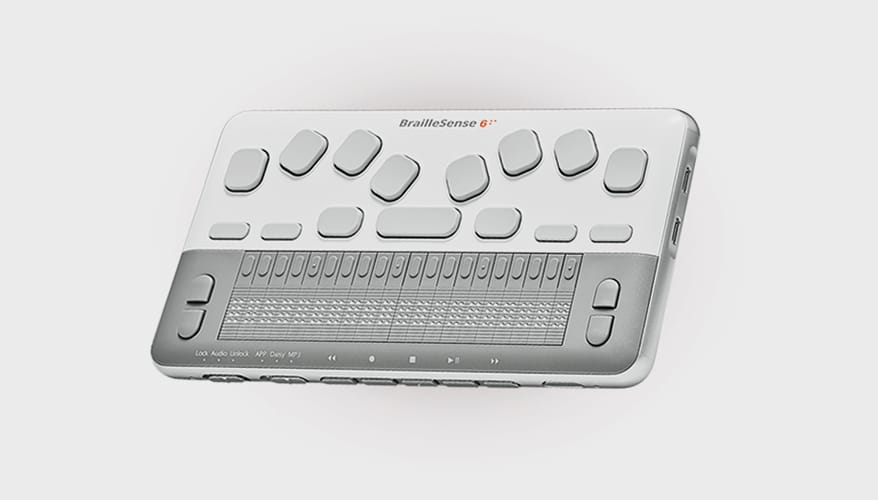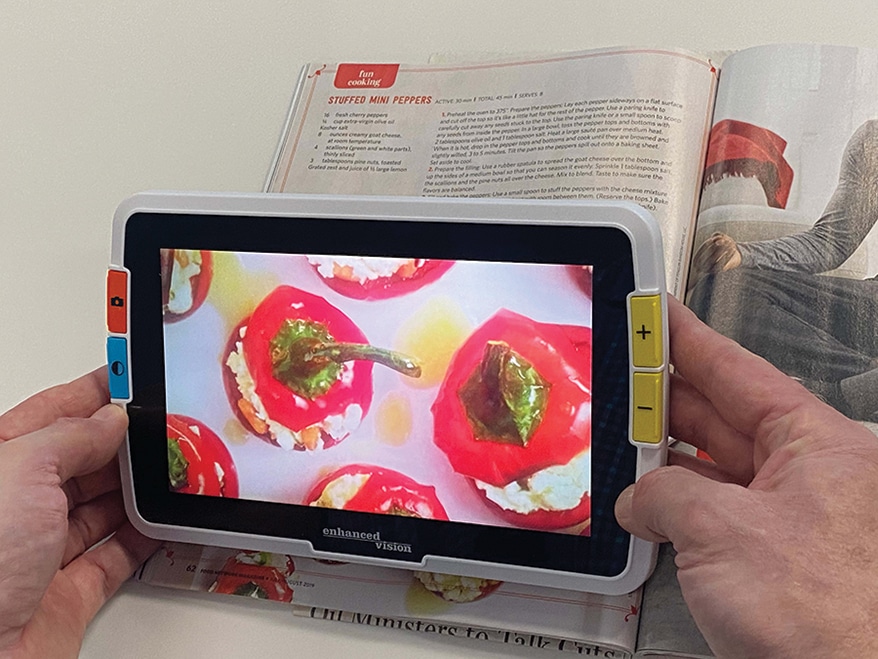THERE ARE FOUR visual functions that can contribute to low vision, says Melva Andrews, an occupational therapist at the Lions Low Vision Rehabilitation Center at UT Health San Antonio. 1. Clarity is affected, even when wearing glasses. 2. Visual fields can affect central and/or peripheral vision. 3. Glare or light are not regulated well when patients have dry eye, cataract, or retinal health problems. 4. Contrast sensitivity can be affected and cause objects to look dull and hazy rather than bright and bold. The myriad tools include optical and video magnifiers, tinted filters, and reading telescopes to help patients regain some independence by enhancing their vision.

eSight
eSight 4 is a versatile low vision device with mobile and cloud-based capabilities to enable people who are legally blind to achieve enhanced vision.
(855) 837-4448 | eSightEyewear.com

Designs for Vision
A classic Designs for Vision product is the 2.2X Bioptic in a Yeoman frame.
(800) 345-4009 | designsforvision.com
Advertisement

HIMS
BrailleSense 6 Mini and the full sized BrailleSense 6 are powerful braille notetakers that are powered by the Android 10.
(888) 520-4467| hims-inc.com

Vispero
Amigo is a portable HD desktop magnifier with an 8-inch widescreen LCD. It uses Dynamic Contrast, a proprietary feature, to provide sharper, clearer, and more defined images.
(727) 803-8000 | vispero.com

Live Eyewear
Cocoons Low Vision UV filter frames come in seven sizes with four different filters designed to enhance contrast and/or reduce glare. Shown here is lemon, one of the most popular tints.
(800) 834-2563 | cocoons.com

Eschenbach Optik of America
Smartlux Digital portable video magnifier with full HD camera that features a 5-inch reflection-free display, large field of view, and personalized setting options.
(800) 487-5389 | eschenbach.com
Advertisement
Smart Ways to Sell Low Vision Aids
Thomas Porter, ODDirector of Low Vision
Services at Saint Louis
University, St. Louis, MO

We offer every subspecialty and patients are often referred to us by their local OD. If they have low vision, the patient can no longer remain independent. Often, they’ll have retinal disease, optic nerve damage, advanced macular degeneration, or complications from diabetic retinopathy or glaucoma. I ask the patient to establish specific visual goals and I match them with a low vision tool so they can achieve their goals. I like to recommend Eschenbach’s Smartlux Digital video magnifier, which is the size of a cell phone and can magnify an object by three to 15 times and change contrast. There are so many devices and magnifiers to choose from that I custom tailor a device to the patient’s needs and complications to set them up for the future.
Melva Andrews, OTR, CLVT, MBA UT Health San Antonio, Lions Low Vision Rehabilitation Center, TX

As an occupational therapist, I work with a low vision OD in a rehab center. I help patients learn strategies to compensate for their vision loss and resume participation in daily activities. I help them learn to use prescribed low vision devices and optimize their environment to minimize visual discomfort. I recommend filters like Cocoons for those who have difficulty with glare and light sensitivity. I look at both the indoor and outdoor environments to see how we can minimize the effects of bright lights and glare. Filters are a wonderful solution as they can help filter light, minimize the effects of scattered light, enhance contrast and improve comfort. Low vision patients often find regular sunglasses to be too dark. These filters also have a variety of tint options and offer UV protection and polarization.